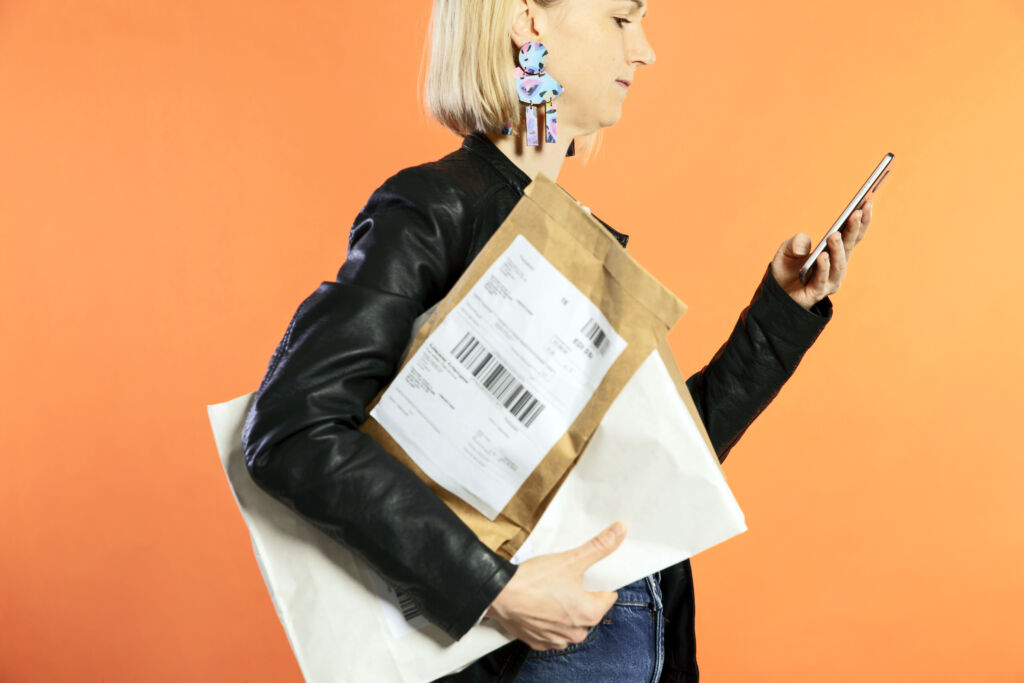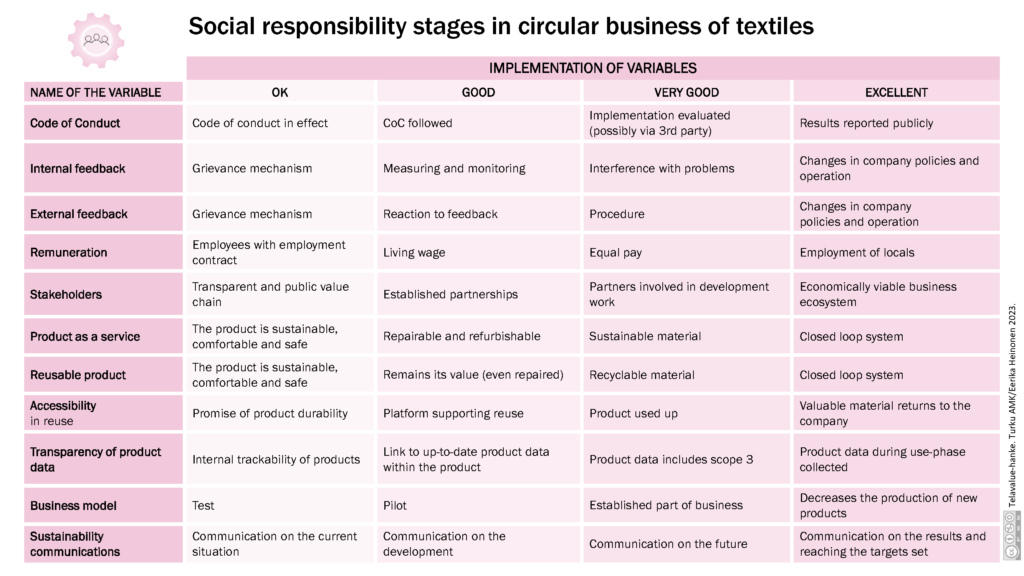How to evaluate social responsibility of novel business models?

As part of the research on novel circular business models, we looked into the different impacts they may have on for example the environment and people. It other words, what negative or positive impacts the companies might have, when we take a particular case under closer inspection.
25 hypothetical cases were conducted, more precisely examples on product-as-a-service, reuse and take back business models. These cases were formed on the basis of previous research and some former project findings. The cases were then discussed and workshopped with both researchers and companies.
As a result, two hypothetical cases were selected for further studying from the perspective of design, economics (economic, social and environmental costs), and data. These two cases were: 1) Business-to-business case in workwear-as-a-service model – A comprehensive solution for companies, and 2) Business-to-consumer case in reuse and take-back.
As a basis for the social impacts study, the framework of social life cycle assessment of products and organisations by UNEP (2020) was used. The different impacts were also cross-checked with the Global Reporting Initiative’s social standards. This study did not take into account the impacts on traditional production countries, as the study limited only on the use-phase, which hypothetically took place in Europe, more accurately in Finland.
In conclusion, a table or visualisation (picture below) was made, and it includes the social pain points of the hypothetical business models, which each company could base their social responsibility evaluation on. You can focus on just one variable for implementation, but in the best case scenario, the company will take into consideration all of the variables and aim to implement them all excellently.
As an example, we can look at the variable ‘business model’:
OK: The company is designing and testing the implementation of a business model on a small scale in real life. The aim of the experiment is to generate significant new knowledge about the idea being developed. From the perspective of social responsibility this would mean, that when the business is not yet established part of the business, the employees don’t have an established position in the company as the finances are still unstable.
GOOD: The company has carried out a pilot based on the previous experiment. The pilot will validate the success of the idea being developed, or at least whether it is worthwhile implementing the idea as part of a business or even building a whole business around it. However, again this model is not yet an established part of the business.
VERY GOOD: The pilot becomes an established part of the business i.e., it is normalised and communicated as a key part of the business. This would mean, stable income and established working conditions for employees and relationships with production partners.
EXCELLENT: The new business model replaces linear operations. Gradually, linear activities will be phased out, leaving only circular activities. This would mean that the most socially responsible stage has been reached. There is no more production of new products, but they circle again and again. However, even when the business model is circular, it needs to be remembered that also all other variables of social responsibility should be taken into consideration. Circular business does not always mean socially just business.

This table should be read from left to right. On the left side, the name of the variable is stated. On the top, the implementation of each variable is stated. The company or other actor can implement the variables on four separate stages (ok, good, very good, excellent). The stages are cumulative, each level must materialize for the actor to move onto the next stage. An organisation can at the same time be on different stages at different variables.
Further information on the study and its process as well as the explanation of the variables presented in the table above, can be found in the documents below.
Presentation on potential social impacts of product as a service and reuse business models
Social impact variables explained
Eerika Heinonen, Turku UAS
eerika.heinonen@turkuamk.fi
